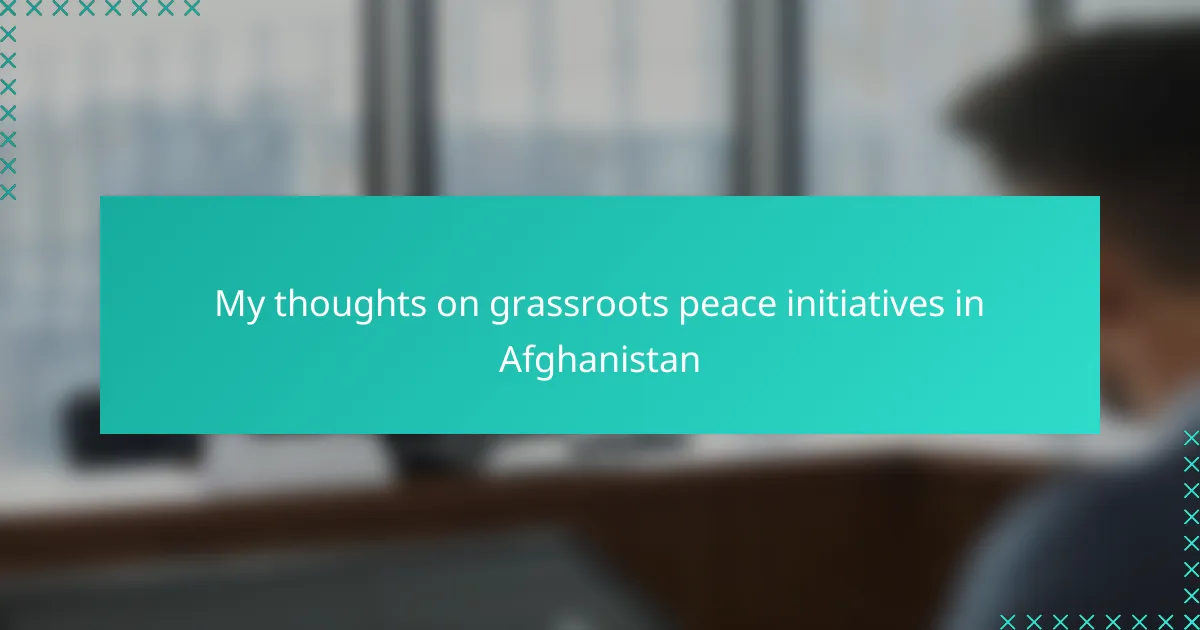Key takeaways
- Grassroots peace initiatives are vital for rebuilding trust within divided communities, especially in conflict-affected regions like Afghanistan.
- Empowering marginalized voices, particularly women and youth, enhances the effectiveness and sustainability of peace efforts.
- Building relationships through inclusive dialogue and community traditions fosters resilience and creates lasting change in local environments.
- Consistent funding and supportive networks are essential for the success and durability of grassroots initiatives in achieving peace.
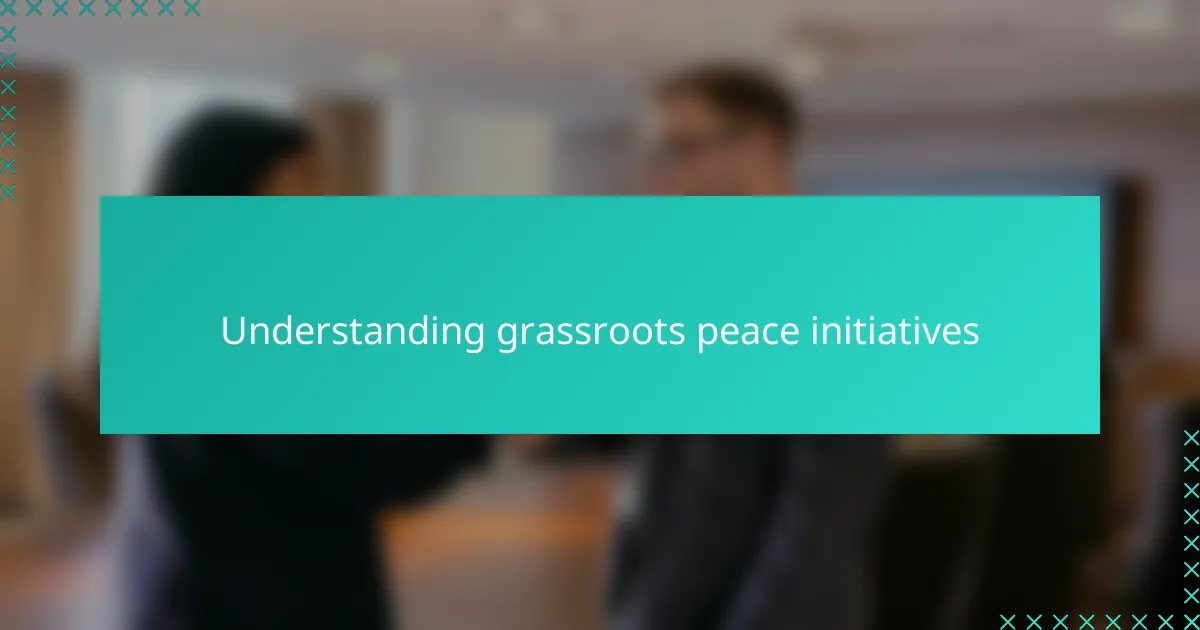
Understanding grassroots peace initiatives
Grassroots peace initiatives, to me, represent the heartbeat of a community’s desire for harmony. These efforts often emerge not from politicians or large organizations but from ordinary people who long for safety and understanding in their daily lives. Have you ever wondered what it’s like for those who live through conflict, yet still choose dialogue over violence? That choice, made quietly and persistently, fascinates me.
In my experience, these initiatives are deeply personal and rooted in local cultures and traditions. They don’t just aim to end fighting but to rebuild trust between neighbors who have been divided by years of conflict. I recall meeting community leaders in Afghanistan who spoke of peace as something fragile, yet worth fighting for every single day. Their stories reveal the emotional complexity behind peacebuilding efforts at the grassroots level.
What strikes me most is how these initiatives challenge the top-down approaches usually seen in global politics. They remind us that peace is not just a policy to be enforced but a shared human aspiration that must grow from the ground up. Can large-scale diplomatic talks truly succeed without this foundational local buy-in? From what I’ve seen, the answer leans heavily towards no.
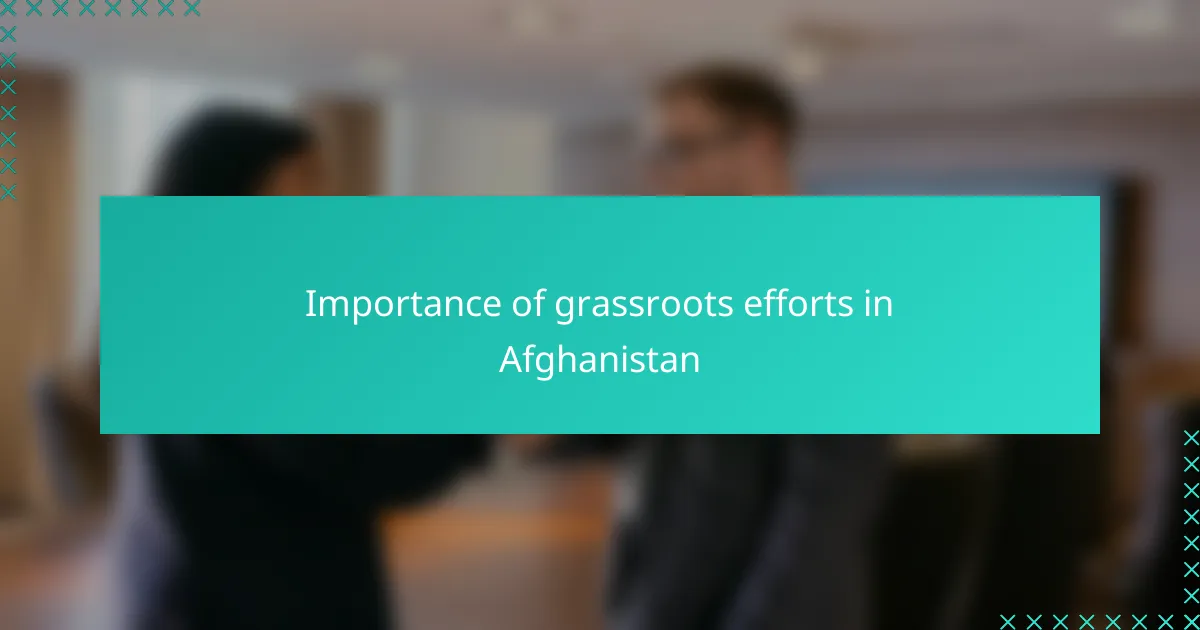
Importance of grassroots efforts in Afghanistan
Grassroots efforts in Afghanistan matter because they bring peace into the everyday lives of people who have endured decades of conflict. When I visited a small village outside Kabul, I saw firsthand how community dialogues helped families heal wounds that politics could never reach. Isn’t it remarkable how ordinary conversations can become revolutionary acts in a place where mistrust runs so deep?
These initiatives give voice to those often ignored by formal negotiations—women, elders, and youth who understand the pain of violence intimately. I remember sitting with a group of women who quietly led peacebuilding efforts, despite threats and setbacks. Their resilience showed me that true peace starts with empowerment and inclusion at the community level.
Without grassroots support, any peace agreement risks becoming an empty promise. How can peace last if it’s imposed from above without the blessing of those living it day by day? In Afghanistan, peace blossoms when people who share the same soil come together, showing me that the foundation for lasting harmony lies far beyond the conference rooms of diplomats.
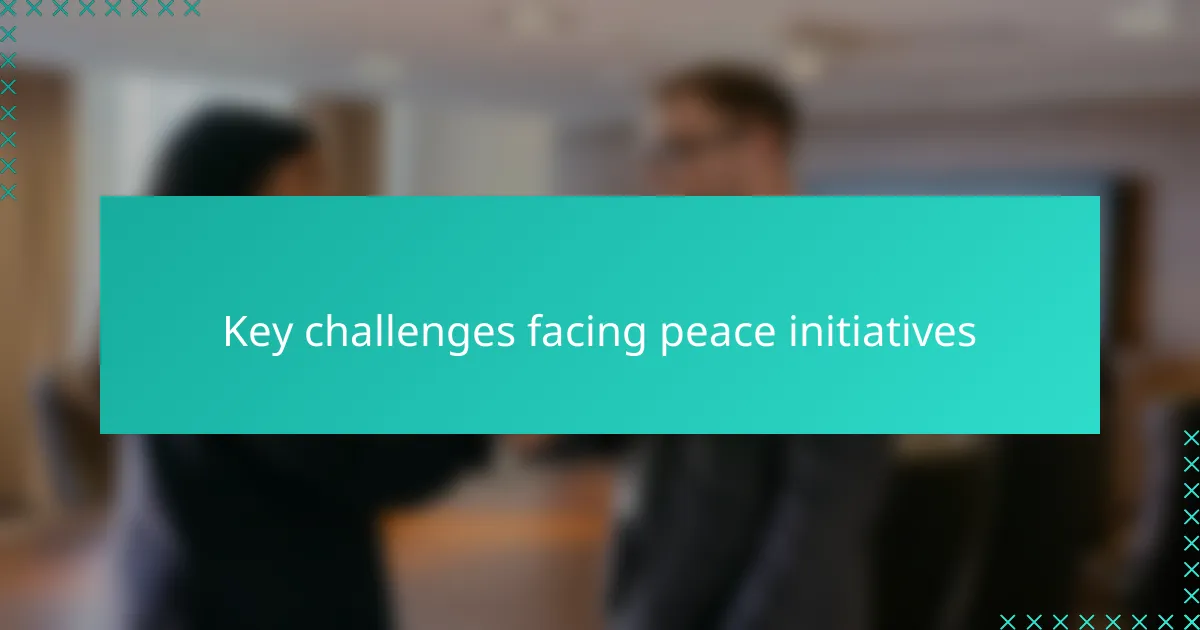
Key challenges facing peace initiatives
One of the toughest challenges I’ve noticed in grassroots peace initiatives is overcoming deep-seated mistrust within communities torn apart by years of violence. How do you rebuild relationships when suspicion lingers in every interaction? From what I’ve seen, this mistrust isn’t just political—it’s personal, embedded in the memories of loss and betrayal.
Another hurdle is the constant threat of violence that shadows these efforts. I recall meeting activists who work quietly, knowing that their pursuit of peace puts them at risk daily. It made me realize that courage here isn’t just about hope—it’s about facing danger head-on every time they gather to talk.
Finally, limited resources and external support often leave grassroots groups isolated. It’s frustrating to watch local leaders strive passionately for peace, yet struggle to access the funding or recognition that could amplify their work. Isn’t it ironic that those closest to peacebuilding sometimes receive the least attention on the global stage?
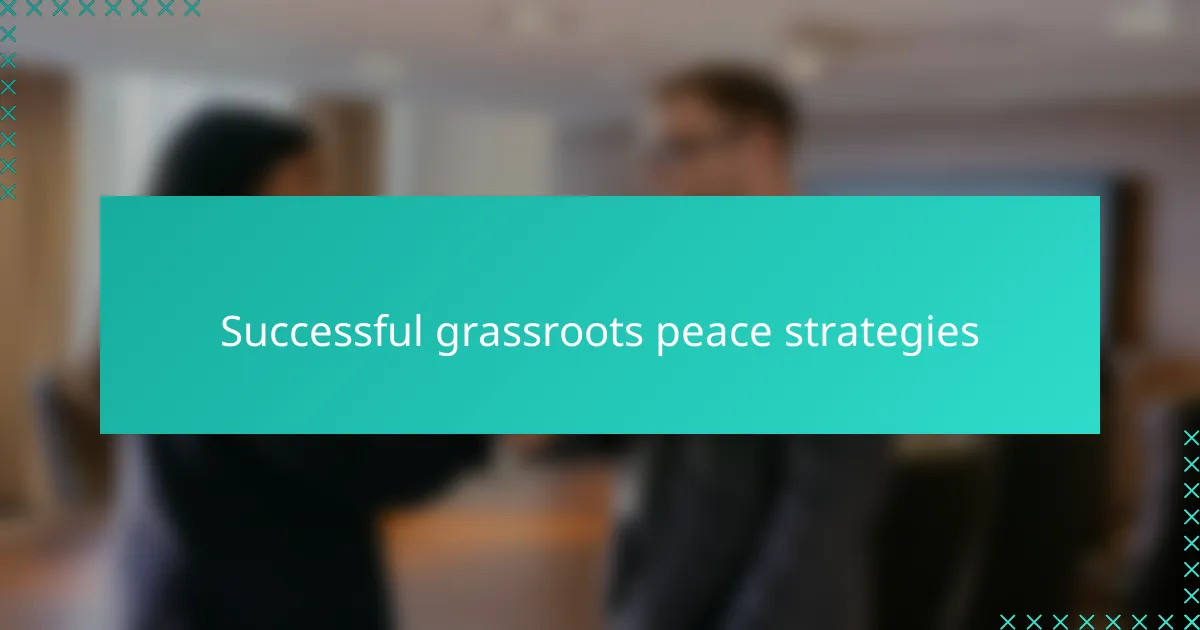
Successful grassroots peace strategies
One strategy that stands out to me is the use of inclusive dialogue circles where villagers, elders, and even former combatants come together to share their stories. I remember witnessing such a gathering where tensions slowly gave way to understanding—it made me question how often we overlook the power of simply listening to heal. These circles aren’t quick fixes, but they sow seeds of trust that are essential for lasting peace.
Another impressive approach involves leveraging local traditions and customs as a bridge to reconciliation. In one community I visited, elders used poetry and storytelling—not just as cultural expression, but as tools to reconnect divided families. It struck me how peacebuilding can be woven seamlessly into everyday life when it respects the rhythms and values people hold dear.
Finally, empowering marginalized groups, especially women and youth, has proven crucial. I met a group of young women who organized grassroots education programs to promote conflict resolution skills—quietly reshaping their community’s future. Their determination made me realize that sustainable peace often blooms from lifting up those voices that have been silenced the longest.
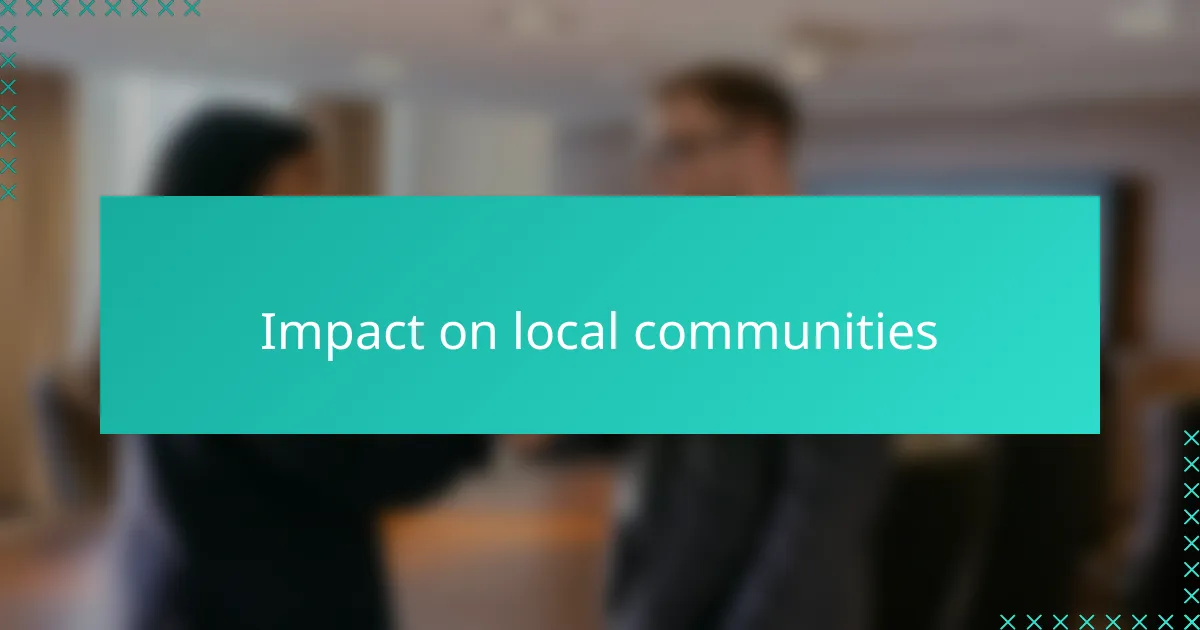
Impact on local communities
What truly lingers in my mind about the impact on local communities is the profound sense of hope these initiatives ignite. I recall a remote village where, after months of dialogue, neighbors who once viewed each other with suspicion began sharing meals and stories again. Isn’t it remarkable how peace can transform everyday interactions into powerful acts of healing?
Yet, the changes are not only emotional but tangible. I witnessed how grassroots peace efforts restored access to schools and marketplaces, directly improving livelihoods and creating safe spaces for children to dream. Such progress made me realize that peace at the community level lays the groundwork for stability that no external intervention can easily replicate.
Still, these positive ripples often face fragile footing. How do communities maintain this momentum against recurring violence or political uncertainty? From what I’ve observed, their resilience is fueled by the very relationships they nurture—reminding me that lasting impact depends on trust rebuilt one conversation, one gesture at a time.
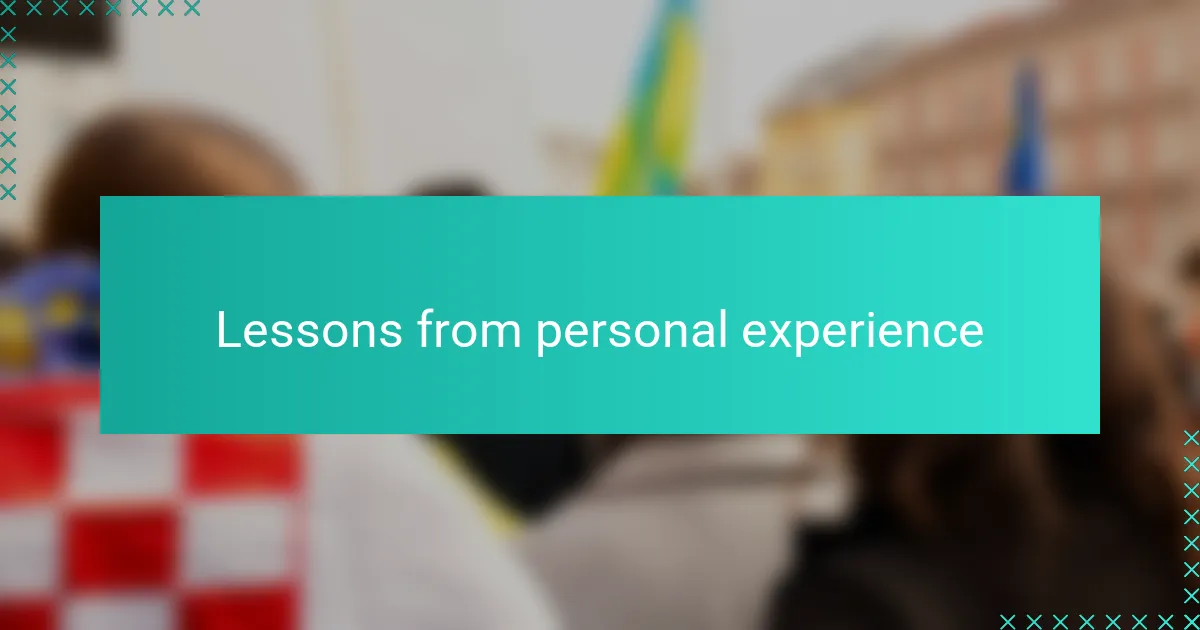
Lessons from personal experience
I’ve learned that patience is more than a virtue in grassroots peace work—it’s a necessity. When I sat with villagers who’d endured years of conflict, I realized that healing takes time, often unfolding slowly through countless conversations, not grand gestures. Doesn’t that patience become a form of quiet resistance against the cycle of violence?
Another lesson that struck me deeply is the importance of listening—not just hearing words, but understanding pain and hope beneath them. In one meeting, a former combatant shared his story with tears, and I felt how vulnerability created a bridge no political speech ever could. Could we all benefit from embracing this kind of empathetic listening in peacebuilding?
I also recognized the resilience required to keep these initiatives alive amid setbacks and threats. I remember a community elder who, despite ongoing danger, returned again and again to mediate disputes. It showed me that courage isn’t a one-time act but a daily commitment to choosing peace over fear. How often do we acknowledge this quiet heroism in global discussions?
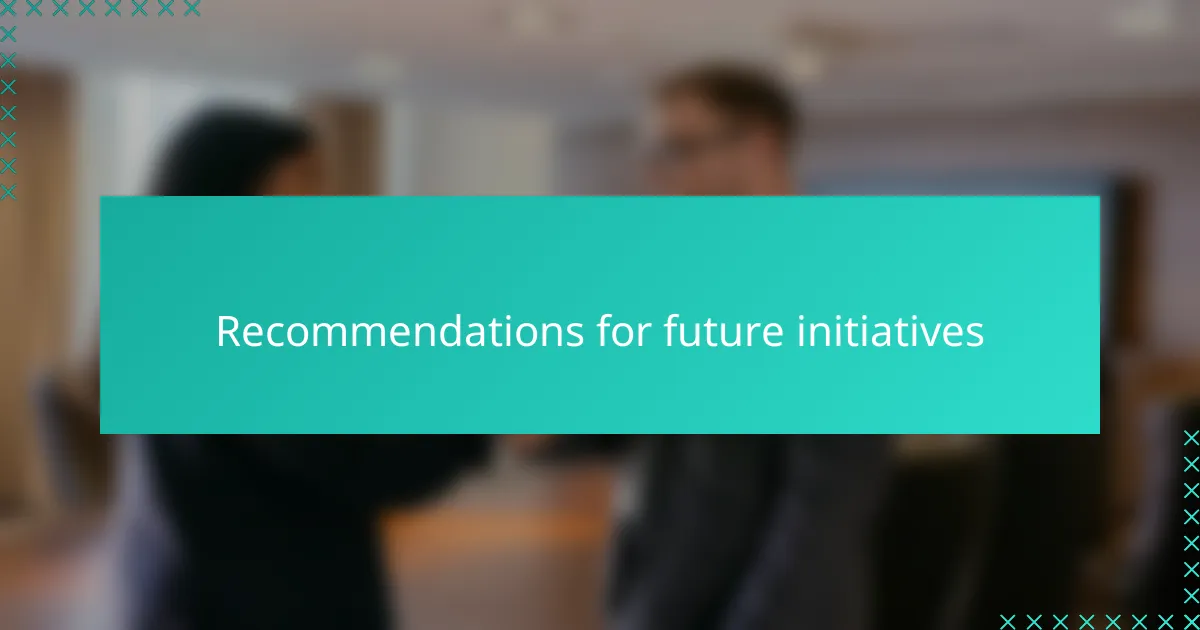
Recommendations for future initiatives
Supporting grassroots initiatives with consistent funding and capacity-building resources is crucial. I recall a community leader in Kandahar telling me how sporadic aid left their peace efforts vulnerable to collapse. Isn’t it clear that sustained financial and technical support can transform fragile projects into lasting movements?
Future initiatives should prioritize inclusivity, especially ensuring women’s and youth’s voices are genuinely heard. When I participated in a youth-led peace workshop, their fresh perspectives challenged entrenched assumptions and sparked innovative ideas. Could empowering these groups be the key to revitalizing peace efforts across Afghanistan?
Finally, fostering connections between local groups and national or international actors can amplify impact without overshadowing community autonomy. I noticed how some villages thrived once they linked with broader networks, gaining solidarity and strategic support. How often do we underestimate the strength found in these bridges between the grassroots and the wider world?
